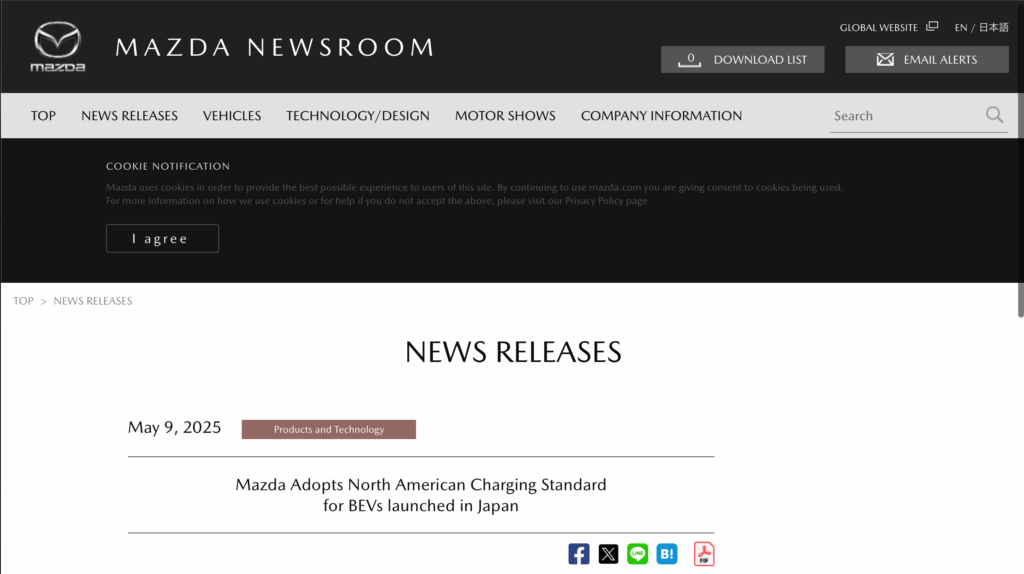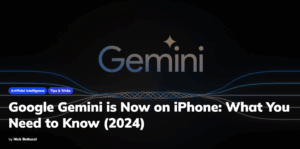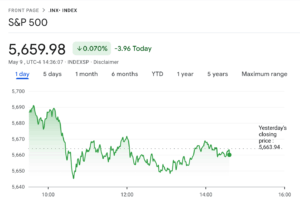On May 9, 2025, Mazda officially announced in a press release (Mazda Adopts North American Charging Standard for BEVs Launched in Japan) and automotive news outlets such as Electrek and Teslarati confirmed that Mazda will adopt Tesla’s North American Charging Standard (NACS) for its battery electric vehicles (BEVs) launched in Japan starting in 2027. Below is a detailed analysis of the agreement and its broader implications.
According to Mazda’s press release, the agreement includes the following:
- Charging Network Access: Mazda BEV owners in Japan will gain access to Tesla’s Supercharger network, significantly expanding charging options.
- Compatibility: Mazda BEVs will retain compatibility with other charging standards ( Japan’s widely used CHAdeMO fast-charging standard) via adapters, ensuring flexibility at non-NACS stations.
- Strategic Rationale: Mazda stated that adopting NACS aligns with its “human-centric” philosophy, aiming to enhance customer convenience and deliver “joy of driving” and “joy of living” through expanded charging infrastructure.
Electrek’s report (Tesla’s NACS Connector Will Be Used by Mazda’s EVs in Japan) further clarified that while Tesla’s Superchargers will be directly accessible, non-NACS stations will require adapters.

Context and Market Dynamics
This agreement builds on Mazda’s prior adoption of NACS in North America. In January 2024, Mazda announced (Mazda Adopts North American Charging Standard (NACS) for North American BEVs) that its BEVs in North America would use NACS starting in 2025, granting access to over 15,000 Tesla Superchargers. The latest move reflects Mazda’s global strategy to standardize NACS adoption.
Japan’s Charging Landscape:
Japan currently lacks a unified BEV charging standard. As noted by Electrek, CHAdeMO dominates the market, but infrastructure growth has been slow. Mazda’s adoption of NACS leverages Tesla’s established Supercharger network in Japan, which already covers key regions.
Precedent in Japan:
Sony Honda Mobility’s AFEELA EV brand announced a similar deal with Tesla in 2024 (Sony Honda Mobility’s AFEELA Announces Deal with Tesla to Adopt NACS and Bring It to Japan), signaling NACS’s growing influence in Japan’s EV market.
Impacts and Challenges
Consumer Impact:
- Pros: Access to Tesla’s high-speed Superchargers will improve convenience for Mazda BEV owners.
- Cons: Initial reliance on adapters for CHAdeMO stations may complicate usability.
As Teslarati noted (Mazda Adopts Tesla’s North American Charging Standard (NACS) in Japan), consumer acceptance of NACS as a new standard remains uncertain.
Market Implications:
- Standardization: NACS adoption could reduce fragmentation in Japan’s charging infrastructure but challenge existing CHAdeMO investors.
- Infrastructure Transition: Electrive.net’s analysis (Mazda führt NACS-Ladestandard ein – in Japan) suggests Japan’s slow CHAdeMO expansion motivated Mazda’s shift, though adaptation will take time.
Global Trend:
NACS is gaining traction worldwide, particularly in North America and parts of Asia. Mazda’s decision aligns with this trend and may accelerate NACS adoption globally.
Mazda’s adoption of NACS in Japan marks a potential turning point for the country’s EV charging standards. Success hinges on consumer acceptance, infrastructure upgrades, and adoption by other automakers. As 2027 approaches, the market will closely monitor NACS’s impact.



+ There are no comments
Add yours